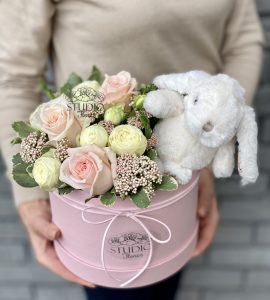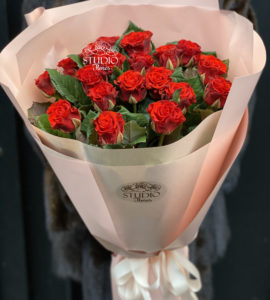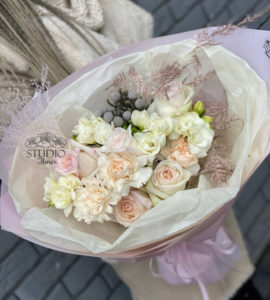The middle of February for all lovers is marked by the most romantic holiday, comparable in importance to the wedding anniversary or the date of the beginning of the relationship. Valentine’s Day has long become a global holiday, becoming a date especially expected by girls and women. This is simply explained: the main attribute of congratulations to beloved ones is fresh flowers, which are especially pleasant to receive in cold winter. The bouquets for February 14 are distinguished by their delicate design, to which florists pay close attention.
The choice of a composition depends on what exactly the donor wants to express with the gift. In order not to be mistaken with a bouquet, you can turn to the language of flowers: the symbolic meaning assigned to each plant will help to compose the correct floristic message. However, many men prefer not to delve into floral symbolism, preferring instead to color symbolism.
The palette of the bouquet really matters: it is believed that the deeper the color of the buds in the composition, the more serious feelings the giver experiences. For this reason, many bouquets for Valentine’s Day are decorated in the traditional color that symbolizes love and passion – red. Scarlet tones are present both in the compositions themselves (in this case, they are set off by plants of calmer colors), and in the decor: red satin ribbons, wrapping paper, hat boxes, branches of berries in bouquets place the necessary accents, not allowing you to forget about the sensuality of the holiday.
Another popular color on Valentine’s Day is pink: all of its shades are used in various proportions and combinations, allowing you to create delicate, graceful bouquets that will tell about the trembling feelings of the donor. By analogy with red, pink may not be present in the bouquet itself, instead taking the central note of the decor.
White as a symbol of purity and purity is also used in festive compositions. The buds of white plants can both balance red flowers or set off pink ones, or make up a self-sufficient noble composition. If the bouquet is intended for a mature woman, white buds are arranged in a package of saturated flowers. For gifts for young girls, florists choose refined pastel packaging.
A romantic bouquet of flowers on February 14 does not have to consist of red, pink or white flowers: plants of soft cream, beige, purple and blue shades, as well as fresh green, blue and yellow tones, are used to compose congratulatory compositions. >
The rose is considered a symbol of love even by those who are not familiar with the language of flowers. This is due to the high popularity of all varieties of this plant on Valentine’s Day: almost all prefabricated compositions dedicated to Valentine’s Day contain roses. It is customary to give these flowers in mono-bouquets: armfuls of several dozen or even hundreds of Dutch roses, lush bouquets of Piano roses, delicate rosebuds of the Menta, Mondial, Memori and Ascot varieties in mid-February are in high demand.
Tulips are an alternative to roses on a holiday of love. These flowers are good both in compositions and in mono bouquets: pink, purple, scarlet, white and yellow tulips are perfectly combined with other plants and look self-sufficient, even if you decorate them with a modest satin ribbon.
Touching and romantic bouquets are obtained from orchids, lisianthus and hydrangeas. Astilba twigs bring grace and sophistication to the composition, delicate delphinium softens the severity of roses and tulips, and tiny chamelacium sets off the beauty of the central elements.
It is not so important what flowers are presented to other women on February 14 – it is much more important what your beloved woman prefers. If the tastes of the chosen one are unknown to the donor, the florists recommend staying on modest gentle compositions in restrained colors. Flowers in a hat box will be a romantic gift: classic round, square or oval. For Valentine’s Day, flower craftsmen also create heart-shaped compositions.


